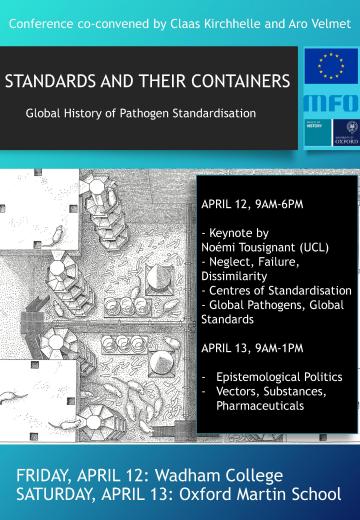
Following the discovery of the first bacterial pathogens in the late 19th century, knowledge about microbes and viruses, pathways of transmission, and possible clinical and chemotherapeutic interventions has grown exponentially. Across the globe, researchers, medical practitioners, and patients alike routinely refer to a canon of ideal-type disease definitions and organisms. What is less well known is how these ideal types were created. Far from being ‘out there’ in nature, the pathogens causing diseases like typhoid, cholera, yellow fever, or malaria had to be brought into the laboratory for isolation and culturing, their taxonomies had to be agreed on by the wider research community, a set of standardised organisms had to be archived in type collections across the world. In order to be useful in the field, new diagnostic tests moreover had to guarantee the reliable identification of discovered disease agents, and global infrastructure had to revamped to guarantee the replicability of laboratory conditions across space. Creating international disease standards was not only time and resource consuming but often resulted in prolonged struggles over disease definitions and scientific prestige.
In April of 2019, the workshop “Standards and Their Containers” will bring together researchers from across the medical humanities to explore the power struggles, technologies, collections, and organisms used to standardise disease in the modern era. Presentations are expected to examine not only the pathogens themselves, but the laboratory networks and animal containers used to culture, transport, and standardise disease. By taking as a starting point the premise that diseases are not stable identities but are constantly redefined and standardised to fit the needs of the societies affected by them, this workshop encourages participants to see how conventional histories of modernization change when seen from the perspective of microbial, rather than human infrastructure invention.